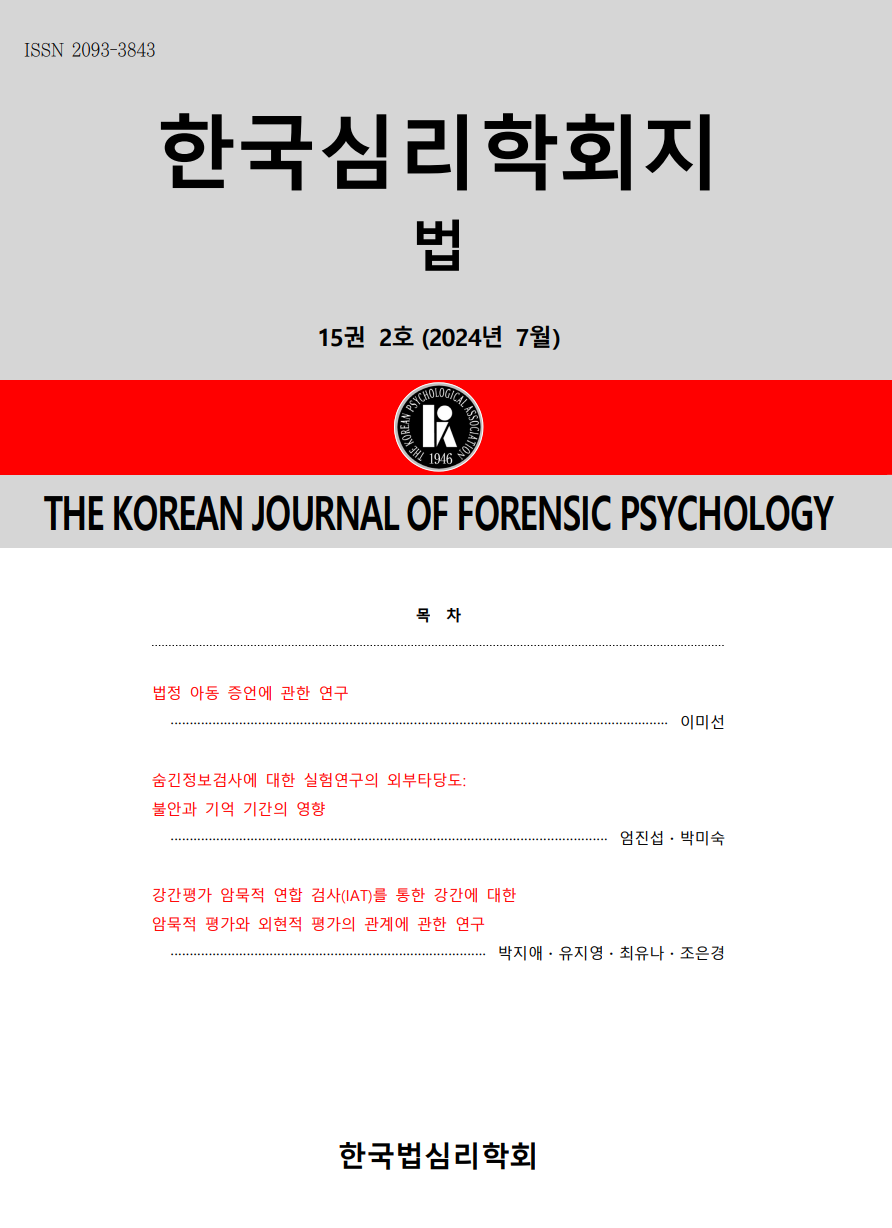open access
메뉴
open access
메뉴 ISSN : 2093-3843
ISSN : 2093-3843
This study investigated the selection of distracters for identification lineups based on suspect-matched, description-matched, and composite-matched procedures. The composite-matched procedure was newly developed and had components of visual description. Child and adult participants watched a video in which a “crime” occurred and then identified the perpetrator two days later from the lineups that were created based on the similarity to the suspect picture, verbal description and composites made by children. Results showed that the identification from the description-matched lineups was more accurate than the other two in the perpetrator-absent condition. Participants’ confidence on their answers was marginally higher in the perpetrator-present condition than perpetrator-absent condition. Adults were more accurate than children, however showed no significant differences among three lineup procedures. Both suspect and composite matched procedures have visual components. Higher similarity among distractors on these procedures could have caused children to be more confused and less accurate than adults and to be relatively better in the description matched procedure.
Recently, reports of sexual offenses against children and youth are sharply increasing in South Korea. The purpose of this study was to investigate treatment programs for reducing recidivism of sexual offenses. In order to achieve this goal, this study first reviewed concepts and features about child molesters. Then, the reasons why therapeutic programs are needed were explained. Recidivism rates and treatment effects of sexual offenders were then carefully analyzed because they are regarded as critical indicators revealing the need for a treatment approach for sexual offenders. Lastly, therapeutic programs including drug treatment and cognitive-behavioral treatment were analyzed focusing on characteristics, procedures, theories and effectiveness of the programs.
Unfortunately, a growing number of children are subjected to sexual or physical abuse in our society as well as in the worldwide. Increased awareness of such issue has resulted in many children coming forward to testify regarding what they have witnessed or experienced. However, compared to adults, children are seriously vulnerable to various types of influences when providing elaborate reports of their experiences. For example, children’s reports are affected by several developmental characteristics in abilities to communicate, concepts of time, differentiating between fantasy and reality and so forth. Indeed, extensive empirical evidence in this field has supported that there is a great deal of developmental capacities and limitations in children’s testimony and yet there has been few articles to review what we currently know about the capacities and limitations of children’s testimony with developmental perspective. Thus, the goal of this paper is to consolidate the body of knowledge related to critical variables impacting on children’s testimony. Ultimately, it would be helpful for interviewers and legal professionals to have a better understanding and ensure the optimal conditions for children to deliver accurate and detailed accounts of their past experiences.